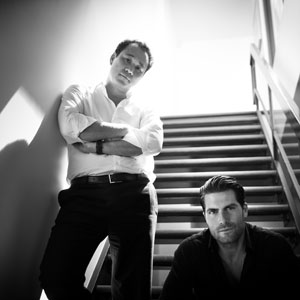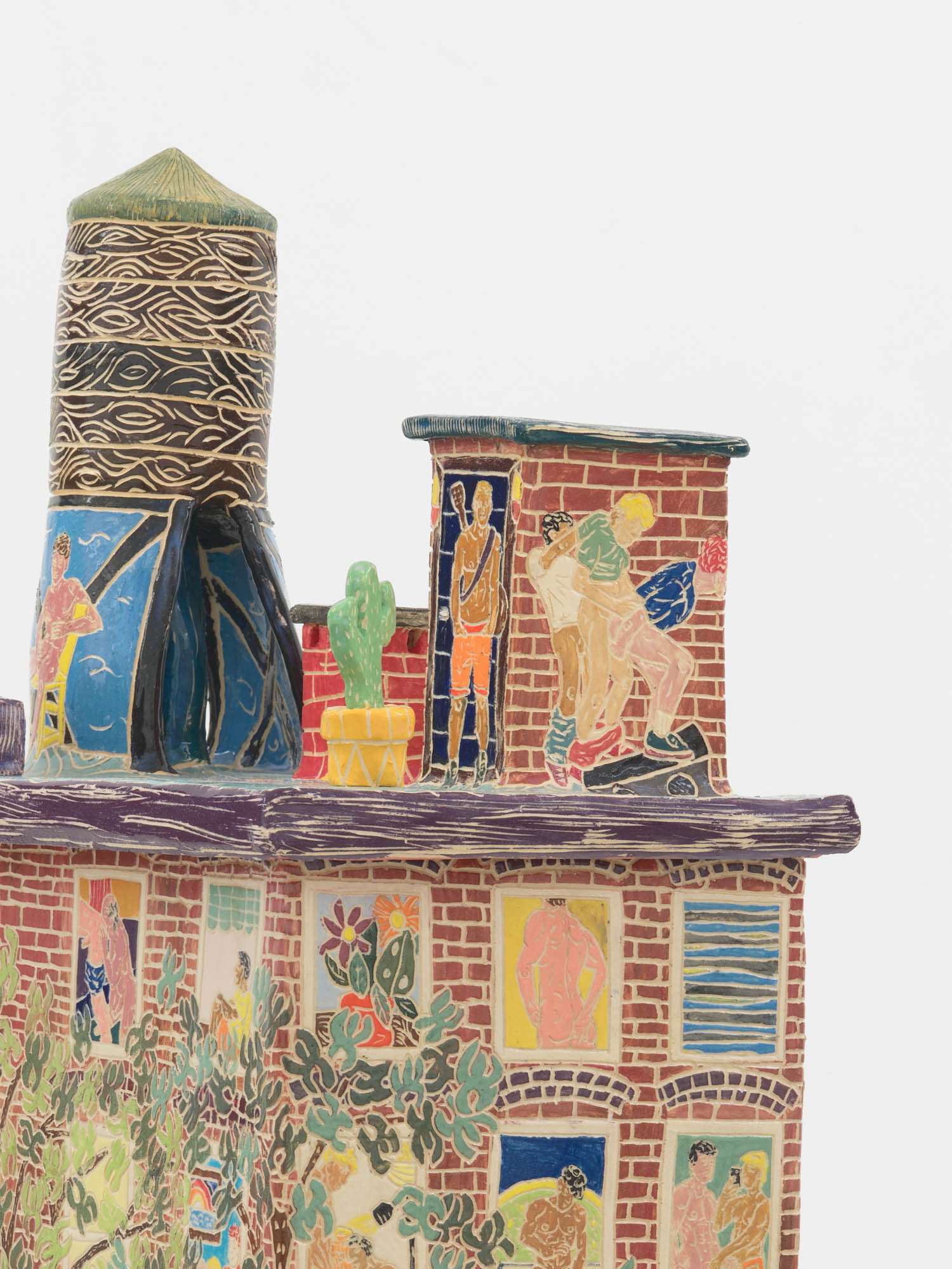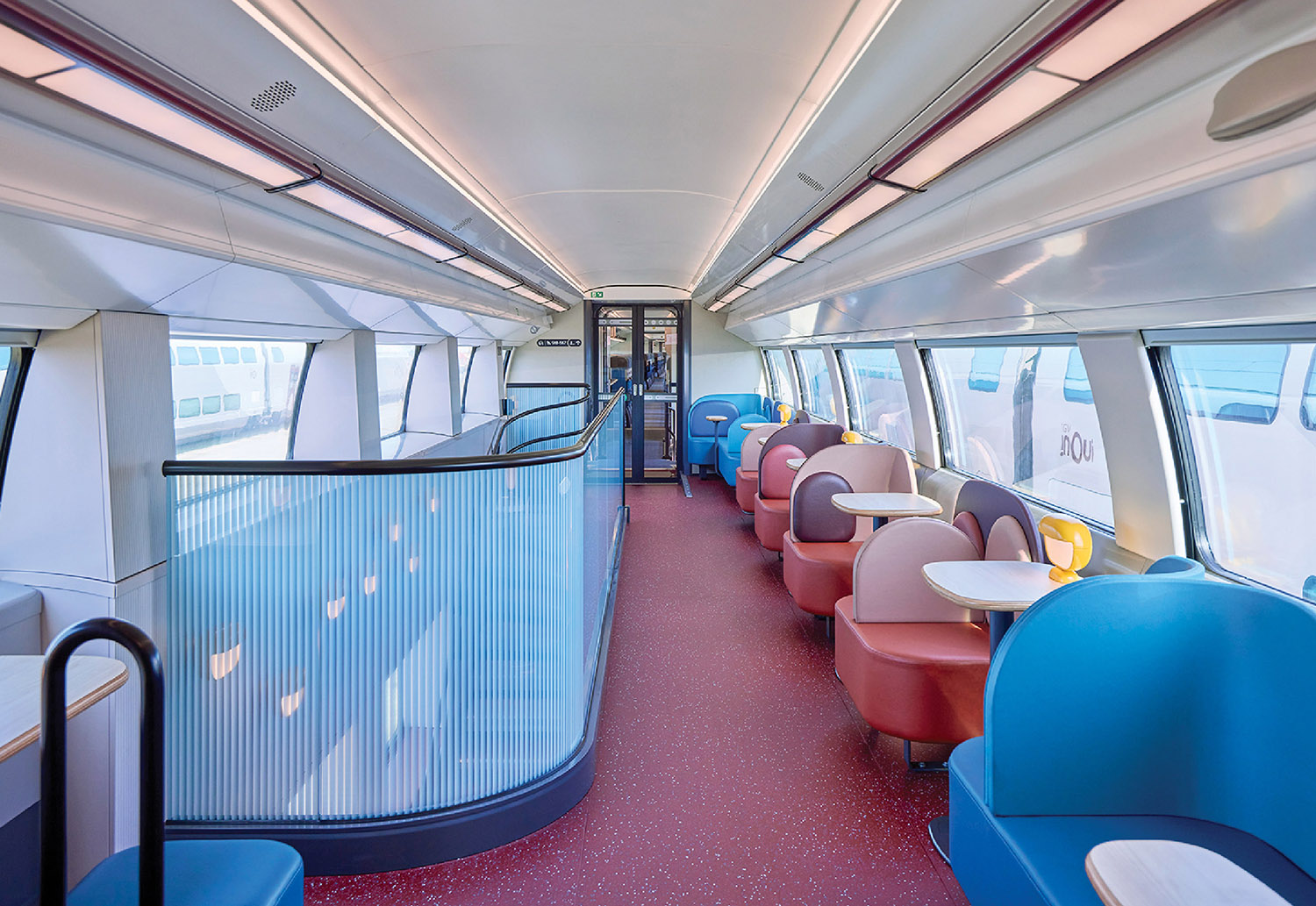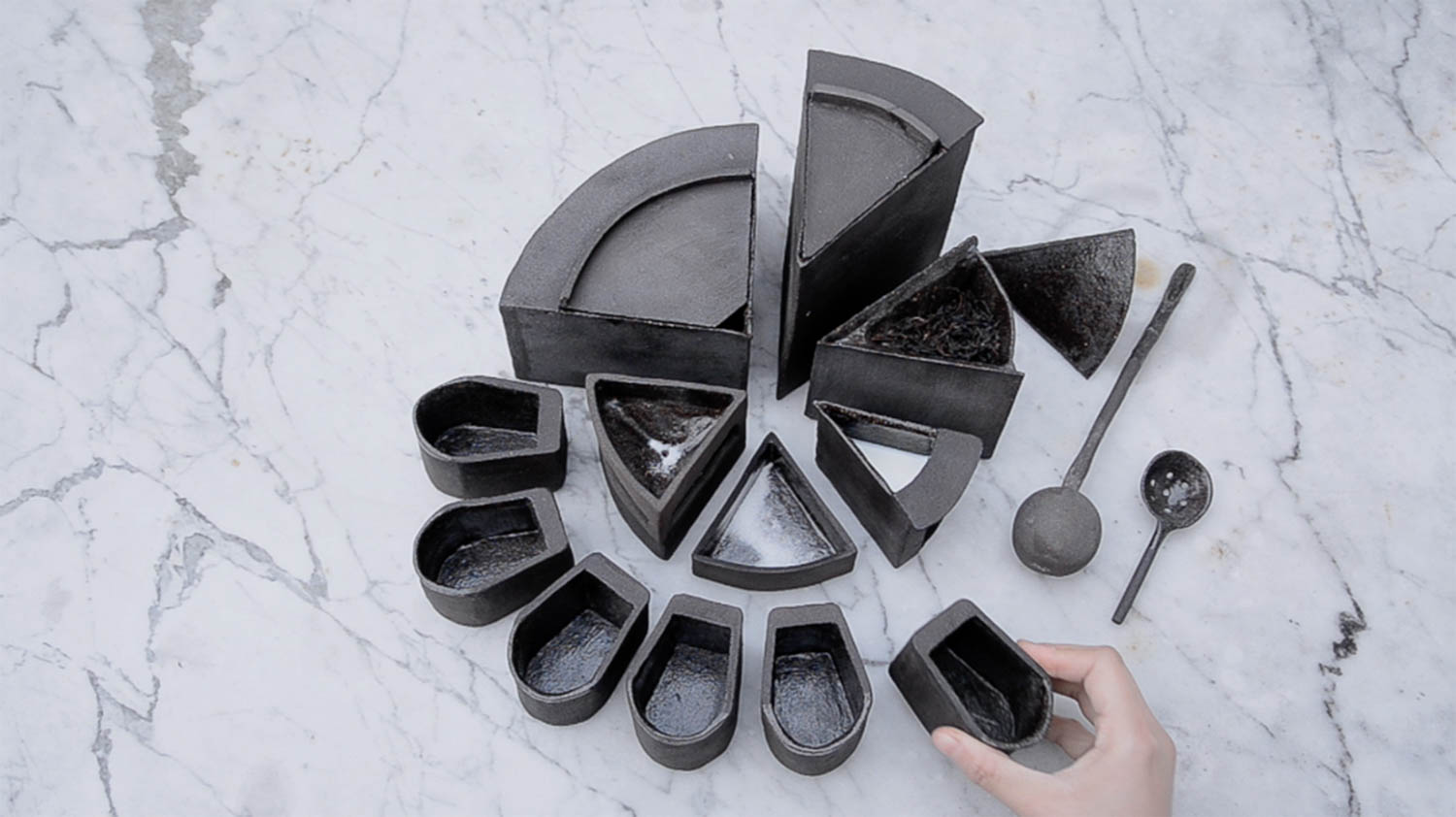10 Questions With… Grade Architecture + Interior Design
Back in 2004, retail and residential architect Thomas Hickey had already taught at Columbia University and New Jersey Institute of Design and was leading a design studio at Parsons The New School for Design . Then and there he met Edward Yedid, a talented young designer who had worked with design star Noel Jeffrey . Yedid’s gift for clean, boundary-pushing aesthetics grabbed Hickey’s attention by the horns and they set off to hone a chic and architectural aesthetic that became the foundation for their New York office. Many retail and residential successes later—not to mention a refined line of furniture—the gentlemen of Grade Architecture + Interior Design keep delivering A-plus work.
This Q&A Goes Behind the Designs of Two Standout Architects
Interior Design: When you met, did you realize your design visions would complement each other?
Thomas Hickey: Our aesthetic was very similar from the start, and our connection has grown organically all along. I asked him to become part of the firm because I think we share a similar mind. I knew I would never have to hover over him, and that we could share a lot of positive experiences together.
Edward Yedid: We’re able to fill in the gaps for each other, something that pushes both of us to do things we wouldn’t ordinarily do. The work has always been the most important thing for both of us, because we’re both passionate about what we do. We’ve become best friends along the way. It just happened that way.
ID: You’re recognized for being a very forward-thinking firm. What allows you to nurture curiosity in yourselves and each other?
EY: Travel keeps us fresh and up to date. Luckily, we get to do that often—be away, come back with new information, and then challenge our staff. Everyone we work with is always challenged to step things up.
TH: We think it’s great when the staff comes back to us with alternatives. We have a strong foundation, and therefore don’t take constructive criticisms personally. We aren’t ever interested in repeating ourselves.
ID: You’re working on a residence within The Pierre hotel in New York. Given your modern sensibilities, how do you approach the task of working within a legendary historic space?
TH: The key from the start has always been keeping the integrity of the initial intent of the building. We’ve kept the French classical details and focused on modernizing our finishing details. It’s a chic, current, timeless mix that fits seamlessly within a historical building. We want the materials to be elegant, and the interplay of all elements to be attractive—not just for “modern for today.”
EY: We also look at a certain period’s styles as an expression of that period, not a set language. Something that has classical features is very much in line with our principles of proportion and scale. We take a more reductive approach to decoration, but the basic principles of our design work possess that same spirit.
 ID: What are some of the other big projects keeping you busy right now?
ID: What are some of the other big projects keeping you busy right now?
ED: There are a lot of interesting residential projects at the moment—in New York, in Brazil, all over. We’re currently in the process of ripping off the back of a townhouse in Park Slope, Brooklyn that was built in 1890. Another one of our clients purchased Oprah’s place on 57th Street and Third Avenue, and asked that we make it the most cutting-edge home in New York. It’s all about custom, and is really giving us an opportunity to show what we can do.
TH: We have three restaurant projects, one that has just started construction. And then there’s a new nightclub at the W Hoboken hotel, and it’s a really wonderful view. All of our projects—the retail, commercial, high-end residential, and commercial—are leading us to an ultimate goal: We would love to design a hotel.
ID: Speaking of commercial work, you’ve done boutiques for companies such as Tiffany & Co. How do you approach the delicate task of staying true to that brand legacy while infusing new energy?
TH: I was the in-house architect for Donna Karan, and in that role I came to understand that people aren’t going shopping to look at my architecture. When working with Tiffany, or Donna Karan, or Victoria’s Secret, we start off by asking how we can add our value to it. We actually just finished three Middle East stores for Victoria’s Secret. Given the region they were going in, we really had to bring in a really sophisticated, elevated design. We first worked with Tiffany when taking it to Asia where the name was recognized but the history was not quite as valued as it is in the U.S. Our goal was to keep to its identity and make it very fresh, as well.
ID: You’ve also introduced your furniture design. In what spirit do you create these pieces?
EY: We’ve been collecting custom pieces throughout the years, and we really wanted to make something attainable for people who can’t necessarily hire us. We spent about six months looking at the pieces we had, developing our brand, identifying the best elements, and then just trying to be flexible as they came to be. We went for elegant, chic, and cool.
ID: What kind of rapport do you most enjoy with clients?
EY: It’s always easier when a client trusts you off the bat. However, sometimes a more “hand-holding” situation can challenge you to be more thorough. We always look for ways of helping people get a better understanding of our style. Right now, we’re doing a New York apartment renovation for an NBA player. This has been a really fun challenge, because he wanted something very, very bold in color. We’ve had the chance to teach him about being a bit restrained, and he is so receptive. He wanted a lot of character to come through, and we are able to teach him to see new solutions, and show him what’s out there.
TH: Just as it is in my relationship with Edward and the people in our office, we’re not going to sugarcoat things for clients. That just lets people down later. We want you to understand. If we don’t think a suggestion is right, we acknowledge what they have to say, then tell them how we feel and why.
ID: Tell me about the rest of your team. What kind of person do you look for?
TH: Luckily for me, I still teach at Parsons, and am exposed to a lot of talented designers. Eddie’s not my only talented designer to come from a class. A lot of times we’ll bring in people from my studio, they do an internship at our office, and eventually make their way onto the team.
ID: What about the state of the industry. Is it getting healthier, in an economic sense?
TH: Work has doubled for us this year, since 2010—from the amount of projects to their scale. Before that, we had to get creative to manage through the economy. We worked with our team, everyone on the team was happy to help us survive—the staff actually worked an extra day for free for a full year. Now we make sure we have a good, strong team, and make sure we’re focusing on a controlled level of growth. We want everyone who works with us to do things with the same standards that we ourselves do.
ID: What are some of the earliest instances when you felt engaged by design?
TH: I’ve always been moved by Mies van der Rohe and Louis Kahn. I’m always inspired, of course, by the contemporaries—Christian Liaigre, Dominique Perrault, Jean Nouvel. But something I remember clearly is studying in Venice at architecture school, with a veteran who really liked his Scotch, and liked to tell his stories. His contemporaries were Picasso and Giacometti. He taught me the process of “model-structure-form.” We now practice that in a different way based on research. Structure, through our process, results in the form.
EY: For me, it’s always been really intuitive. I always had an innate feeling about what things should look like. It started with blocks, then went to Legos I did my brother’s Legos for him at age six and seven. At 21, I was having fun out in the world and my mom cut me off and said, “Go figure it out.” So I looked at Parsons with no idea how much interior design would fulfill me. I met Tom there, and it just gets better and better. It was a perfect fit.
More:
10 Questions With… Douglas Burnham
10 Questions with… Hitoshi Abe
10 Qs with… Nila Leiserowitz of Gensler


